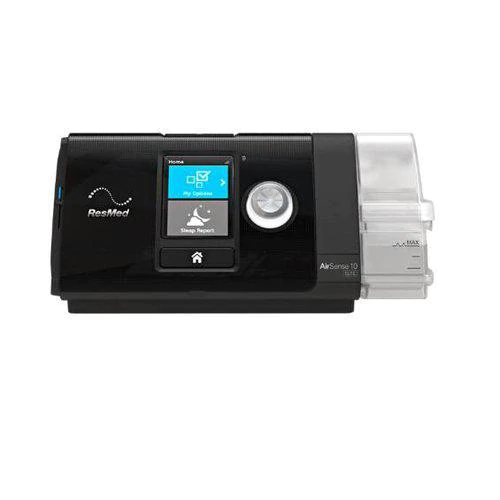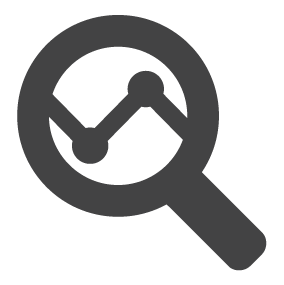Topics: Sleep Apnea, cpap
The most common treatment for obstructive sleep apnea is through a CPAP therapy (Continuous positive airway pressure therapy). The primary cause of OSA is the obstruction of the upper airway due to the over-relaxing of the muscles when a person is asleep. A CPAP machine ensures that the airway is kept open by delivering a continuous flow of air through it at a steady pressure. This helps an OSA patient breathe normally through the night and sleep without any disruptions.
A CPAP machine comprises a mask which is connected to a hose pipe, which in turn is connected to a small machine that pumps air into the patient's airway. There are a variety of masks available for CPAP machines that are designed considering the needs, preferences, and facial shapes of the patients.
Possible CPAP Side Effects and Ways to Handle Them
Although CPAP devices are known for their effective treatment of obstructive sleep apnea, there are some side effects noted in some cases. Some of the common side effects of CPAP machine that patients using CPAP devices face are as mentioned below:
1.Claustrophobia
2. Dry nose and Throat
3. Aerophagia
4. Air leakage
5. Call of Nature
Now let's discuss them one by one in detail:
1. Claustrophobia
A lot of patients feel claustrophobic using a CPAP device. Even though the air pressure is meant to help patients sleep better, they feel uncomfortable because the CPAP mask is strapped to the face which covers the nose and a larger part of the face. This is one the most common CPAP machine side effect. If you use a full face mask, you may face this problem more than the others.
You can consider using a nasal pillow mask which does not cover the full face, to eliminate the feeling of claustrophobia.
.webp?width=500&height=500&name=cpap-masks%20(2).webp)
However, if your sleep specialist has recommended a full face mask, you may try getting used to the mask gradually. For instance, you can begin with wearing the mask for shorter naps or during your awake time—while reading, watching TV etc—so you get accustomed to it. Once you get comfortable with the mask, you can increase the amount of time you spend with the mask on.
If your device has a Sleep Onset Detection feature, it will help you get accustomed to your device faster. This feature enables the CPAP device to begin at a lower air pressure and when it detects that the patient has fallen asleep it gradually increases the pressure to the prescribed level.
2. Dry Nose and Throat
Can CPAP Cause Nose Bleeds?
Yes, CPAP (Continuous Positive Airway Pressure) therapy can sometimes causes nosebleeds, primarily due to dry air passing through the nasal passages. Using a humidifier with the CPAP machine often helps mitigate this side effect. The air pressure from the CPAP device can cause sinus or nasal congestion, which if not corrected in time can cause nose bleeding. Because the air blown into the mask is dry, it can cause a burning sensation in the lungs for some patients.

To address this issue, many CPAP devices now feature an in-built heated humidifier that increases the moisture level of the air. This reduces the dryness in the airway and the nose, making it comfortable to breathe. If you already have a device with a humidifier, ensure that it is clean and working properly.
3. Aerophagia
Many patients using a CPAP device for treatment of obstructive sleep apnea complain of 'swallowing' or 'eating' the air. This is a common problem that occurs when the air pressure level is too high. In an effort to adjust to the high air pressure, patients often gulp the air. This is known as aerophagia in medical terms. It can lead to patients experiencing severe belching, bloating stomach, and abdominal discomfort.
To avoid aerophagia, patients must get their CPAP devices calibrated to a lower air pressure level. It is prudent to seek intervention and advice from a sleep specialist who will prescribe the right CPAP pressure that will give you a successful treatment outcome.
4. Air Leakage
Again, high air pressure settings on your CPAP device can cause the air to leak from the mask, rendering your CPAP therapy ineffective. If you can feel or hear air leaking from your CPAP mask, adjust the fitment of the mask on your face. The mask should rest snugly on your face and create a pressure seal so there is no leakage of air. Try adjusting the fitting so the mask fits well according to your facial contours. If the air still leaks, maybe it's because of wear and tear of the mask.
5. Call of Nature
It is only natural to feel the need to go to the washroom during the night. Wearing a CPAP mask makes it difficult to go to the bathroom. Instead of removing the mask from your face, disconnect it from the CPAP machine. This will prevent disturbance to the mask fitting on your face. Once you are back, connect it back to the machine and you can go back to sleep.
Conclusion
CPAP devices are the gold standard in treatment for obstructive sleep apnea. As with any other treatment protocol, there are some initial CPAP machine side effects expected when using the CPAP devices. But, if you know how to handle them, you can make your treatment comfortable and effective.
ResMed machines are extensively tested to minimize side effects, ensuring users experience optimal comfort and performance during CPAP therapy. You can take the 15-day CPAP trial before buying your device. The trial gives you a chance to evaluate how CPAP fits into your lifestyle, understand the possible challenges, and identify the right air pressure level that allows you to sleep comfortably.
Book your 15-day CPAP trial today.
If this article captured your interest, you'll definitely enjoy our follow-up piece: How to clean CPAP Machine, APAP vs CPAP, Manage Diabetes using CPAP Therapy, and Disposable vs Non Disposable CPAP Filter




